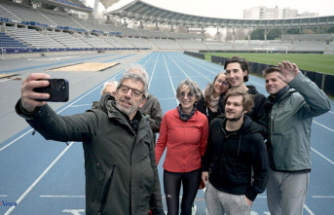In Germany, the name "Tempo" is almost synonymous with disposable handkerchiefs. But with the increasing discussion about the mountains of garbage that mankind produces, throwing away handkerchiefs is no longer undisputed.
The nose is running, but no handkerchief with me. "Do you have a pace?" one asks the person opposite. You grab it, blow your nose and throw it in the trash. This is normal for most people today.
The history of the disposable handkerchief really began in this country 90 years ago. On September 18, 1929, the "Tempo" brand was registered with the German Patent Office for the first time - according to the manufacturer, it was the first disposable handkerchief in Germany. The brand name is now used almost synonymously with the word handkerchief.
The Jewish paper manufacturer Oskar Rosenfelder registered the patent in Berlin. However, he himself had little of the global success: After the Nazis took power, a hate campaign was launched against Rosenfelder. He is forced to sell the company and has to flee abroad. The then NSDAP member and founder of the mail order company "Quelle", Gustav Schickedanz, took over the business in 1935.
Right from the start, manufacturers have focused on the arguments of comfort and health. "Clever housewives realize that with Tempo they not only save themselves a lot of tiresome washing and ironing work, but that it is also more hygienic," reports the company in its in-house "Zeitreise" on the Internet.
By the end of the 1930s, 400 million "Tempo" handkerchiefs were being produced in Heroldsberg and Forchheim near Nuremberg. According to the German Patent and Trademark Office, around 20 billion towels are sold worldwide every year.
The convenience has its price, however: The production of disposable paper is a heavy burden on the environment, warns the Federal Environment Agency: It requires a lot of wood, energy and water and leads to the discharge of hazardous substances into water bodies.
More than 19 kilos of paper handkerchiefs and serviettes, toilet paper or kitchen rolls are consumed per person and year in Germany (as of 2017), reports the consumer advice center. How large the proportion of handkerchiefs is is not listed. From the point of view of the Federal Environment Agency, however, the following applies to all hygiene paper: “We flush our forests down the toilet with it, because hygiene paper is usually only used once and is then lost to the paper cycle via the sewage system or disposal.”
"Buy (...) paper handkerchiefs, toilet paper or kitchen roll made from 100 percent recycled paper (Blue Angel). Use paper-free alternatives such as washable cloth handkerchiefs, cloth hand towels and cloth napkins or wipes." Supporters of the "Zero Waste" movement (German: "zero waste" and "zero waste"), for example, recommend making handkerchiefs from old bed linen.
However, this can be less practicable for hygienic reasons, especially during the cold season. The risk of infecting other people is higher if you use the same handkerchief repeatedly. However, the Federal Environment Agency also certifies that handkerchiefs made from waste paper have a significantly better eco-balance than tissues made from wood fibers.
However, the trend seems to be going in a different direction: According to the consumer center, the consumption of paper products made from fresh fibers in Germany increased by 40 percent between 2004 and 2017. In addition, paper products are increasingly being made from recycled fibers.












